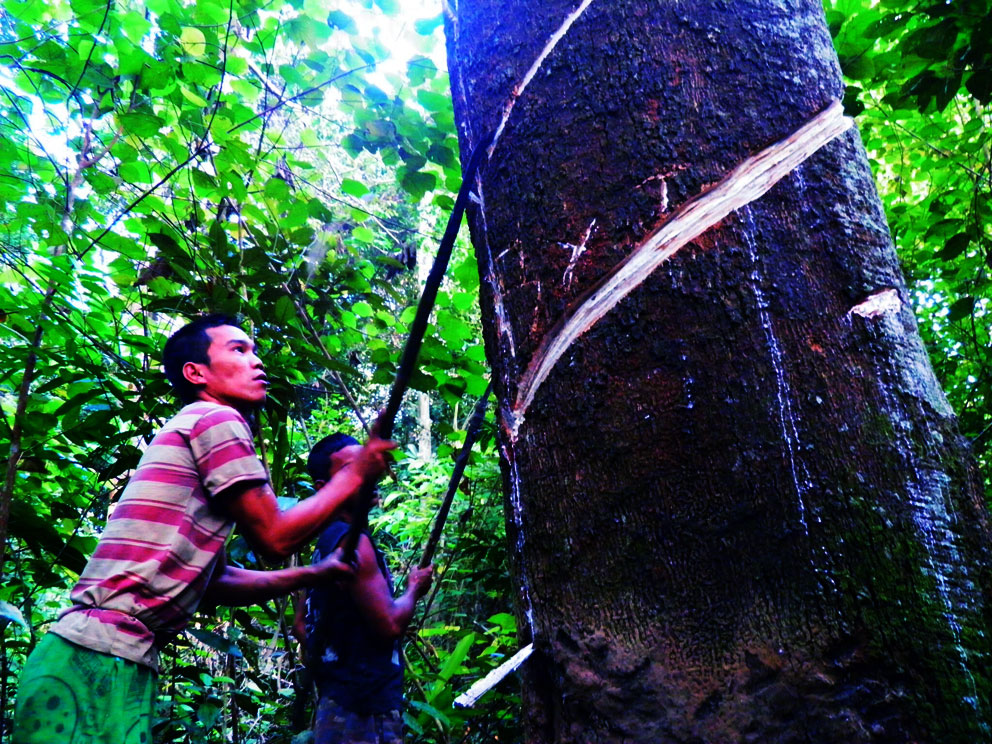Hutan Harapan Management explores the potential and develops a non-wood forest product market (HHBK). Jelutong sap is one of them. There are two types of jelutong in lowland forest areas, namely land jelutong (Dyera costulata) and swamp jelutong (Dyera pholypylla syn Dyera lowii).
Jelutong tree is cylindrical with a height reaching 50 meters. The diameter of the stem can reach 150 centimeters and Jelutung can flower twice a year. The flowers are white and the pods are fruit. When it is ripe, the fruit breaks to spread small and winged seeds around it.
From a survey conducted by the Hutan Harapan Agroforestry Team, at least 5 Batin Sembilan families were identified who used to harvest jelutong sap. They harvest from 32 trees. Like rubber, jelutong trees are also tapped to get the sap.
In one day, one family can collect 10 kilograms of rubber sap. “There used to be toke from outside who came to buy and order jelutong sap. The price is sometimes better than rubber sap, Rp 8,000 per kilogram,” said Rusman, a figure of the Batin Sembilan Kelompang river.

Even though the price is good, Rusman said, the toke who used to accommodate has no longer bought their jelutong sap. In fact, from 5 families of jelutong harvesters, about 1 ton of jelutong sap can be collected per month.
Operational Director of PT Indonesia Ecosystem Restoration (REKI) Lisman Sumardjani said that the potential of jelutong sap in Hutan Harapan was fairly large. In fact, PT REKI is ready to supply routine jelutong sap 1 ton per month if there are interested buyers.
Moreover, in Hutan Harapan, agroforestry is now being developed with the community that has established a partnership in the management of the forest area with PT REKI. To educate the community, 6 agroforestry demonstration plots were developed with an area of 1-2 hectares each.
This mixed garden is also planted with jelutong in addition to rubber, melinjo, jengkol, petai, fruits and various types of wood such as aloes, pulai, jabon, meranti flowers, and areca nut. More than 31,000 rubber and wood seedlings and 2,000 fruit and yard seedlings were distributed for the development of agroforestry.
Not only that, every year the hunting of jelutong seeds is carried out on the parent trees in the Hutan Harapan for sowing. From the collection at the end of February to the beginning of March 2018 alone, as many as 1,800 jelutong seeds have been planted in the Beruang river nursery owned by PT REKI.

Jelutong tree is a producer of sap or rubber, which among others is the raw material for chewing gum, tires, varnish, leak-proof coatings, and insulators. In addition to meeting domestic needs, jelutong trees are exported to Singapore and Japan.
The development of potential and marketing networks will help restore the Hutan Harapan ecosystem and improve the economy of the community in and around it.
Writer: Joni Rizal and Ardi Wijaya









